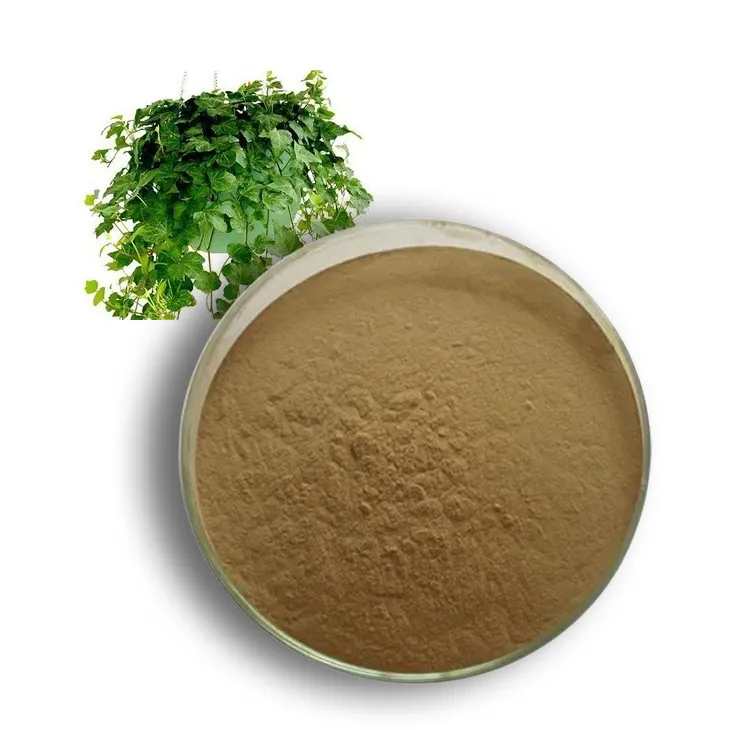- 0086-571-85302990
- sales@greenskybio.com
Science Meets Nature: Clinical Studies on Gynostemma pentaphyllum's Therapeutic Potential
2024-07-03
Introduction
Gynostemma pentaphyllum, a remarkable herbaceous plant, has been gradually emerging as a subject of great interest in the medical arena. This plant, native to certain regions in Asia, has a long history of use in traditional medicine systems. In recent years, the scientific community has turned its attention towards exploring the therapeutic potential of Gynostemma pentaphyllum through clinical studies. This exploration represents a beautiful intersection of science and nature, as modern research methods are applied to study a plant with a rich natural heritage.
Antioxidant Effects
1. The Concept of Antioxidants Antioxidants play a crucial role in maintaining the health of the human body. They are substances that can prevent or slow down damage to cells caused by free radicals. Free radicals are unstable molecules that are produced during normal cellular metabolism but can also be generated by external factors such as pollution, radiation, and certain chemicals. When free radicals accumulate, they can cause oxidative stress, which is associated with a variety of diseases including cancer, cardiovascular diseases, and neurodegenerative disorders.
2. Gynostemma pentaphyllum's Antioxidant Properties in Clinical Studies Several clinical studies have investigated the antioxidant effects of Gynostemma pentaphyllum. These studies have found that components present in the plant, such as gypenosides, possess significant antioxidant capabilities. For example, in a study involving a group of participants with mild oxidative stress markers, supplementation with Gynostemma pentaphyllum extract over a period of several weeks led to a reduction in the levels of oxidative stress markers in their blood. This indicates that the plant extract may be able to scavenge free radicals effectively in the human body.
- The antioxidant activity of Gynostemma pentaphyllum is thought to be related to its ability to enhance the body's endogenous antioxidant defense systems. It may up - regulate the production of antioxidant enzymes such as superoxide dismutase (SOD), catalase (CAT), and glutathione peroxidase (GSH - Px).
- Another aspect of its antioxidant effect is its potential to chelate metal ions. Metal ions such as iron and copper can catalyze the production of free radicals. By chelating these metal ions, Gynostemma pentaphyllum can further reduce the formation of free radicals in the body.
Anti - Inflammatory Effects
1. Inflammation and Its Role in Diseases Inflammation is a complex biological response of the body to harmful stimuli, such as pathogens, damaged cells, or irritants. It is a protective mechanism that aims to remove the injurious stimuli and initiate the healing process. However, chronic inflammation can lead to a variety of diseases, including arthritis, inflammatory bowel diseases, and certain types of cancer.
2. Gynostemma pentaphyllum's Anti - Inflammatory Actions in Clinical Research Clinical trials have demonstrated that Gynostemma pentaphyllum exhibits anti - inflammatory effects.
- One of the mechanisms through which it exerts its anti - inflammatory effect is by modulating the activity of inflammatory cytokines. Cytokines are small proteins that play a key role in the regulation of the immune response and inflammation. Studies have shown that Gynostemma pentaphyllum can reduce the production of pro - inflammatory cytokines such as interleukin - 6 (IL - 6) and tumor necrosis factor - alpha (TNF - α).
- Gynostemma pentaphyllum also appears to have an impact on the inflammatory signaling pathways. For example, it may interfere with the NF - κB (nuclear factor kappa - light - chain - enhancer of activated B - cells) pathway, which is a major regulator of inflammation. By inhibiting this pathway, the plant can potentially reduce the expression of genes involved in inflammation.
Immunomodulatory Effects
1. The Immune System and Immunomodulation The immune system is a complex network of cells, tissues, and molecules that defends the body against foreign invaders such as bacteria, viruses, and parasites. Immunomodulation refers to the ability to regulate or modify the immune response. A well - balanced immune response is essential for maintaining good health. An overactive immune system can lead to autoimmune diseases, while an underactive immune system makes the body more susceptible to infections.
2. Gynostemma pentaphyllum's Immunomodulatory Role in Clinical Studies
- Clinical research has indicated that Gynostemma pentaphyllum can enhance the immune function. It has been shown to stimulate the proliferation and activation of immune cells such as lymphocytes. In a study on healthy volunteers, those who received Gynostemma pentaphyllum extract for a certain period had an increase in the number of circulating lymphocytes, which are important for the body's immune defense.
- Moreover, Gynostemma pentaphyllum may also have a regulatory effect on the immune system. It can balance the Th1/Th2 immune response. Th1 cells are mainly involved in cell - mediated immunity against intracellular pathogens, while Th2 cells are associated with humoral immunity and allergic responses. By modulating the Th1/Th2 ratio, Gynostemma pentaphyllum can help the body maintain a proper immune balance and prevent excessive immune reactions.
Conclusion
In conclusion, the clinical studies on Gynostemma pentaphyllum have revealed its great therapeutic potential in terms of antioxidant, anti - inflammatory, and immunomodulatory effects. These findings suggest that this herbaceous plant could be a valuable addition to the field of medicine. However, further research is still needed.
- Larger - scale clinical trials are required to confirm the efficacy and safety of Gynostemma pentaphyllum in different patient populations.
- The mechanisms underlying its various effects need to be further elucidated. For example, more in - depth studies are needed to understand how the gypenosides in the plant interact with the human body at the molecular level to produce antioxidant, anti - inflammatory, and immunomodulatory effects.
- Additionally, studies on the optimal dosage, formulation, and long - term effects of Gynostemma pentaphyllum are essential for its potential clinical applications.
FAQ:
What are the main therapeutic potentials of Gynostemma pentaphyllum according to clinical studies?
Clinical studies have shown that Gynostemma pentaphyllum has several main therapeutic potentials. It has antioxidant effects, which can help combat oxidative stress in the body. It also exhibits anti - inflammatory properties, potentially reducing inflammation in various tissues. Additionally, it has immunomodulatory effects, meaning it can regulate the immune system.
How does science interact with nature in the study of Gynostemma pentaphyllum?
Science interacts with nature in the study of Gynostemma pentaphyllum by conducting clinical research. Scientists observe the natural characteristics and effects of the plant in its natural state. Then, through scientific methods such as controlled clinical trials, they analyze its potential therapeutic effects on humans. They also use modern scientific techniques to study its chemical components and how these components interact with the body's biological systems.
What are the antioxidant effects of Gynostemma pentaphyllum in clinical studies?
In clinical studies, the antioxidant effects of Gynostemma pentaphyllum are significant. It contains certain compounds that can scavenge free radicals in the body. These free radicals are often associated with cell damage and various diseases. By reducing the levels of free radicals, Gynostemma pentaphyllum may help protect cells from oxidative damage, which in turn can have a positive impact on overall health.
How do the anti - inflammatory effects of Gynostemma pentaphyllum work?
The anti - inflammatory effects of Gynostemma pentaphyllum likely work through multiple mechanisms. It may interfere with the inflammatory signaling pathways in the body. For example, it could inhibit the production of certain inflammatory mediators such as cytokines. By doing so, it can reduce the inflammatory response in tissues, which can be beneficial in treating inflammatory - related diseases.
Can Gynostemma pentaphyllum be used as an immunomodulatory agent?
Yes, based on clinical research, Gynostemma pentaphyllum can be used as an immunomodulatory agent. It can adjust the function of the immune system. It may enhance the immune response when the immune system is weak, for example, by stimulating the production of immune cells. At the same time, it can also regulate an overactive immune system to prevent excessive immune reactions.
Related literature
- Clinical Evaluation of Gynostemma pentaphyllum in Chronic Inflammatory Diseases"
- "Antioxidant Properties of Gynostemma pentaphyllum: A Clinical Perspective"
- "The Immunomodulatory Role of Gynostemma pentaphyllum in Clinical Trials"
- ▶ Hesperidin
- ▶ citrus bioflavonoids
- ▶ plant extract
- ▶ lycopene
- ▶ Diosmin
- ▶ Grape seed extract
- ▶ Sea buckthorn Juice Powder
- ▶ Beetroot powder
- ▶ Hops Extract
- ▶ Artichoke Extract
- ▶ Reishi mushroom extract
- ▶ Astaxanthin
- ▶ Green Tea Extract
- ▶ Curcumin Extract
- ▶ Horse Chestnut Extract
- ▶ Other Problems
- ▶ Boswellia Serrata Extract
- ▶ Resveratrol Extract
- ▶ Marigold Extract
- ▶ Grape Leaf Extract
- ▶ blog3
- ▶ Aminolevulinic acid
- ▶ Cranberry Extract
- ▶ Red Yeast Rice
- ▶ Red Wine Extract
-
Resveratrol extract
2024-07-03
-
Lemon Extract
2024-07-03
-
Citrus Aurantium Extract
2024-07-03
-
Ivy Extract
2024-07-03
-
melatonin extract
2024-07-03
-
Genistein
2024-07-03
-
Plantain extract
2024-07-03
-
Oat Straw Extract Powder
2024-07-03
-
Mulberry leaf Extract
2024-07-03
-
Nettle leaf extract
2024-07-03





















